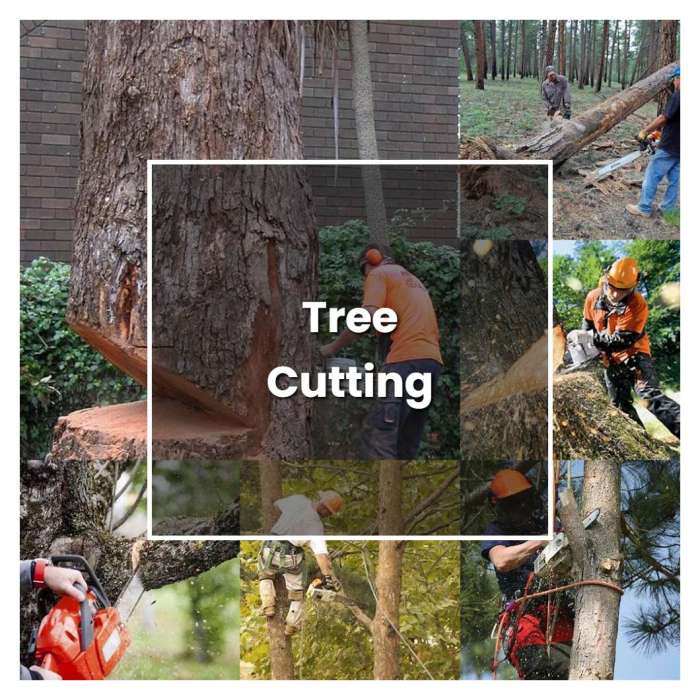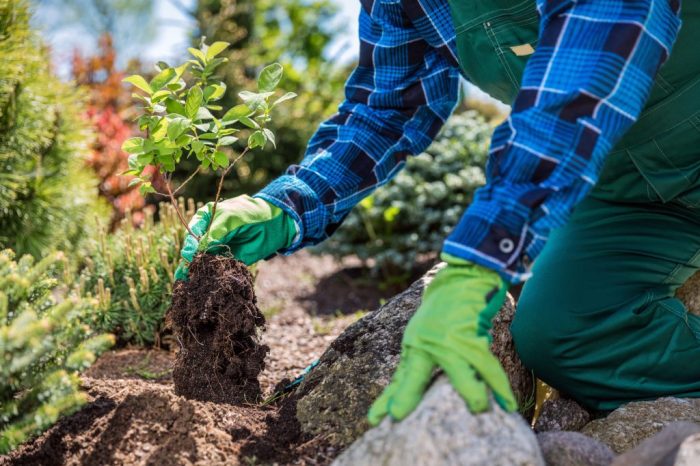Branch Selection and Preparation

Can you plant a tree branch – Planting a tree branch, a practice deeply rooted in Batak tradition, requires careful selection and preparation to ensure successful growth. The process mirrors the meticulous care we give to our family and community, nurturing growth and prosperity. Choosing the right branch and preparing it properly is paramount to the success of this endeavor.
Ideal Branch Characteristics, Can you plant a tree branch
A suitable branch for planting possesses several key characteristics. Firstly, it should be a relatively young, healthy branch, exhibiting vigorous growth. The ideal branch will be firm and flexible, free from any signs of disease, pest infestation, or physical damage such as cracks or significant bruising. The bark should be smooth and unbroken, indicating a healthy inner structure.
The length should be appropriate for planting, typically around 6-12 inches, depending on the species and the planting method. A branch with several healthy buds is preferred, as these will develop into new leaves and branches, signifying the plant’s potential for growth. Observing these characteristics increases the chances of a successful planting.
Branch Preparation Steps
Preparing the branch for planting involves several crucial steps. Begin by selecting a sharp, clean pruning shears or knife to make a clean cut at a 45-degree angle, just below a node (the point where a branch or leaf emerges). This angled cut promotes efficient water absorption. The cut surface should be smooth to minimize the risk of infection.
Next, any leaves near the base of the branch should be removed to reduce water loss and focus the plant’s energy on root development. Consider dipping the cut end in a rooting hormone solution, to stimulate root growth, following the instructions on the product label carefully. This step is crucial, as it promotes faster and more successful root development.
Importance of Healthy Branch Selection
Selecting a healthy branch is of paramount importance. A branch infected with disease or pests will likely fail to thrive, even with careful preparation. Disease can spread rapidly, affecting the new roots and ultimately killing the branch. Pests can weaken the branch, hindering its ability to establish itself and grow. Inspect the branch carefully for any signs of discoloration, unusual growths, insect damage, or wilting.
Reject any branch that shows any indication of illness or infestation. The health of the chosen branch directly correlates with the success of the planting.
While planting a tree branch directly isn’t always successful, understanding proper propagation techniques is key. For a more reliable approach, especially with a beautiful magnolia, you might find detailed instructions on successful planting in this comprehensive guide on how to plant magnolia trees. This knowledge will greatly improve your chances of success, whether you’re starting with a branch cutting or a sapling.
Comparison of Branch Preparation Methods
While the basic steps remain consistent, minor variations exist in preparing branches for planting. Some prefer to use a rooting hormone powder, while others opt for a liquid solution. The choice depends on personal preference and available resources. Some might choose to wound the base of the cutting slightly to encourage callus formation and root initiation, while others avoid this step.
However, the core principle remains: creating a clean, healthy cut and minimizing stress on the branch. The variations represent different approaches, but the goal of promoting successful root development remains the same.
Species-Specific Considerations

Planting tree branches, while seemingly straightforward, hinges significantly on the chosen species. Success depends on understanding the unique requirements of each type of tree, from its natural propagation methods to its environmental preferences. Ignoring these species-specific needs can lead to low survival rates or stunted growth, ultimately negating the effort invested. This section delves into the nuances of selecting and preparing branches for propagation based on species.
Species Suitable for Branch Propagation
The ease of propagating a tree from a branch varies considerably depending on the species. Some trees readily produce roots from cuttings, while others prove more challenging. Understanding this inherent variability is crucial for selecting appropriate species for your planting project. Knowing which species are easier to propagate can save time and resources.
- Willow (Salix spp.): Willows are renowned for their ease of propagation from cuttings. Their branches readily root in moist soil, even without the aid of rooting hormones.
- Poplar (Populus spp.): Similar to willows, poplars are also relatively easy to propagate from cuttings, often showing rapid root development.
- Fig (Ficus carica): Fig branches, particularly those from semi-hardwood cuttings, are known for their ability to root successfully.
- Grape (Vitis vinifera): Grapevine cuttings, especially those taken from mature canes, have a high success rate when planted under appropriate conditions.
- Crape Myrtle (Lagerstroemia indica): Crape myrtles are relatively easy to propagate from hardwood cuttings, taken during the dormant season.
Challenges Associated with Different Species
Not all tree species are created equal when it comes to branch propagation. Certain species present unique difficulties that require specialized techniques or increased patience. Understanding these challenges is vital for maximizing success.
- Oak (Quercus spp.): Oaks are notoriously difficult to propagate from cuttings, often requiring specialized techniques and high humidity environments.
- Pine (Pinus spp.): Conifers like pines are generally challenging to propagate from cuttings, demanding specific conditions and often slow to root.
- Maple (Acer spp.): While some maple species are easier to propagate than others, many require specific techniques and careful attention to moisture levels.
- Citrus (Citrus spp.): Citrus trees can be propagated from cuttings, but the success rate is often lower than with other species, and they require specific environmental conditions.
Species Selection for Specific Locations
The suitability of a tree species for a particular planting location is paramount. Factors such as climate, soil type, and available sunlight influence the success of branch propagation. Careful consideration of these factors is essential for long-term survival and growth.
For example, a drought-tolerant species like a crape myrtle would thrive in a sunny, dry location, while a willow, which prefers moist conditions, would be better suited to a site with consistent water availability. Selecting species appropriate for the local environment maximizes the chances of successful propagation and ensures the health and longevity of the new trees.
Troubleshooting and Common Problems

Planting tree branches, while a rewarding endeavor, can present several challenges. Success hinges on understanding potential problems and implementing proactive solutions. Careful observation and timely intervention are key to nurturing healthy growth. Ignoring early signs of distress can lead to significant setbacks, ultimately hindering the branch’s ability to root and thrive.
Wilting and Dehydration
Wilting is a common sign of stress in newly planted branches. This occurs when the branch loses water faster than it can absorb it. Several factors contribute to wilting, including insufficient watering, exposure to strong sunlight, and transplant shock. Addressing wilting involves increasing watering frequency, providing shade during the hottest parts of the day, and ensuring the planting medium retains moisture.
A consistent supply of moisture is crucial during the initial rooting phase. For instance, regularly misting the leaves can help maintain hydration, particularly in dry climates. Mulching around the base of the planting also helps to retain soil moisture.
Disease and Pest Infestation
Various diseases and pests can affect newly planted branches. Fungal infections, such as leaf spot or root rot, can weaken or kill the branch. Pest infestations, including aphids or scale insects, can sap the branch’s energy and hinder its growth. Regular inspection for signs of disease or pests is essential. Early detection allows for timely intervention, preventing widespread damage.
For example, the presence of unusual spots or discoloration on leaves may indicate a fungal infection, while the presence of small insects suggests a pest infestation. Appropriate treatments, such as fungicides or insecticides, may be necessary, always following the manufacturer’s instructions carefully. In some cases, removing affected parts of the branch might be required to prevent further spread.
Slow or Lack of Rooting
Failure to root is a significant problem. Several factors contribute to this, including improper preparation of the branch cutting, unsuitable planting medium, and insufficient moisture. To promote rooting, ensure the branch cutting is properly prepared, including the use of rooting hormone and planting in a well-draining medium. Maintaining consistent moisture levels is also critical. Using a propagation tray or humidity dome can help maintain a humid environment, promoting root development.
For example, misting the cuttings regularly can also aid in moisture retention. Patience is key; rooting can take time, varying depending on the species and environmental conditions.
Preventing Problems
Prevention is always better than cure. Selecting healthy branches from disease-free parent trees is crucial. Proper preparation of the branch cuttings, including the use of rooting hormone, increases the chances of successful rooting. Choosing an appropriate planting medium that retains moisture but also allows for good drainage is important. Providing adequate sunlight and watering, while avoiding overwatering, promotes healthy growth.
Regular monitoring for signs of disease or pests allows for timely intervention. A well-planned approach significantly reduces the risk of encountering common problems. For example, regularly inspecting the planting site for pests and diseases helps identify potential issues early on.
FAQ Summary: Can You Plant A Tree Branch
What type of cutting is best for propagation?
Semi-hardwood cuttings, taken from the current season’s growth, often strike root most easily.
How long does it take for a branch cutting to root?
This varies greatly depending on the species and environmental conditions, but it can range from several weeks to several months.
What if my cutting starts to wilt?
Increased humidity and careful watering are crucial. Consider misting regularly.
Can I use rooting hormone?
Yes, rooting hormone significantly increases the chances of successful propagation.
